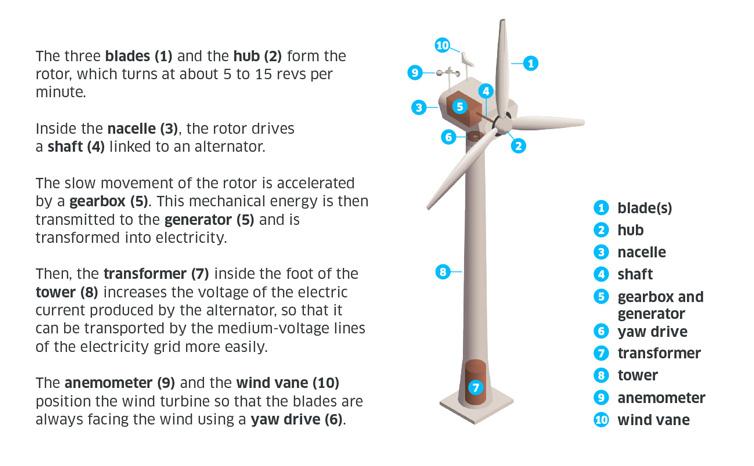
A sector serving the world’s energy transition
Wind energy is the second-placed renewable energy in France, which has the second highest wind resources in Europe.
With its 8,000 wind turbines, which produced nearly 34.1 TWh of green electricity in 2019, the French wind energy sector supplies 6.3% of the country's total electricity production1.
In Europe, wind power is the second-placed form of electricity production capacity, with 192 GW2.
Worldwide, wind energy is present in 90 countries, with an installed capacity of 651 GW2.
Wind energy is a low-carbon, safe and inexhaustible renewable energy, which creates jobs that cannot be relocated and generates growth in its host territories. This type of energy definitely has the wind in its sails!
Also read: Race for innovation and power in wind energy
How an onshore wind turbine works
A wind turbine is a machine that harnesses the kinetic energy of the wind. Combined with an electric generator, the turbine converts the wind into electricity, which is injected directly into the electricity grid.
An onshore - or land-based - wind turbine consists of a mast (up to 135 metres tall to catch the wind), at the top of which is fixed a rotor with three blades. Equipped with numerous sensors, the nacelle of the wind turbine turns to face the wind. Its blades rotate at 5 to 15 revolutions per minute. At wind speeds of less than 10 km/h a wind turbine will not start to rotate, and if the wind is too strong (more than 90 km/h), it stops automatically for safety reasons.
The amount of wind energy produced varies based on three key parameters: the shape and length of the blades, the wind speed and the temperature (which changes the density of the air moved by the blades and therefore the output). That makes them the perfect zero-emission production solution in some regions of the world!
